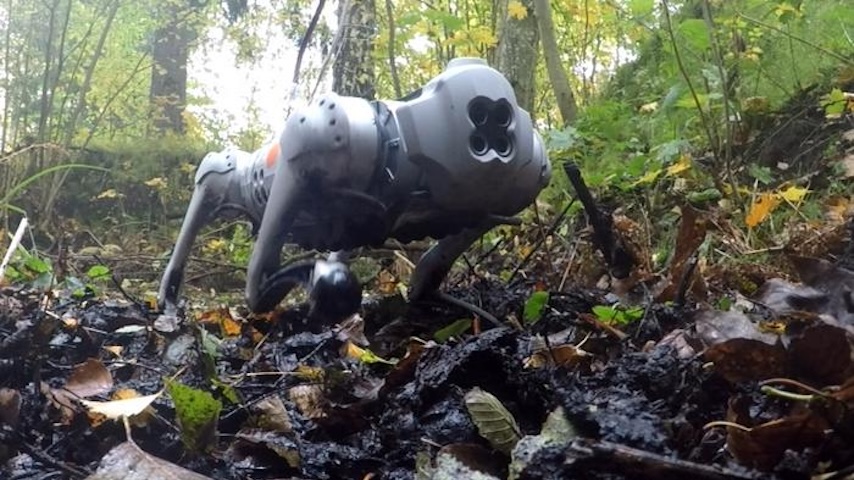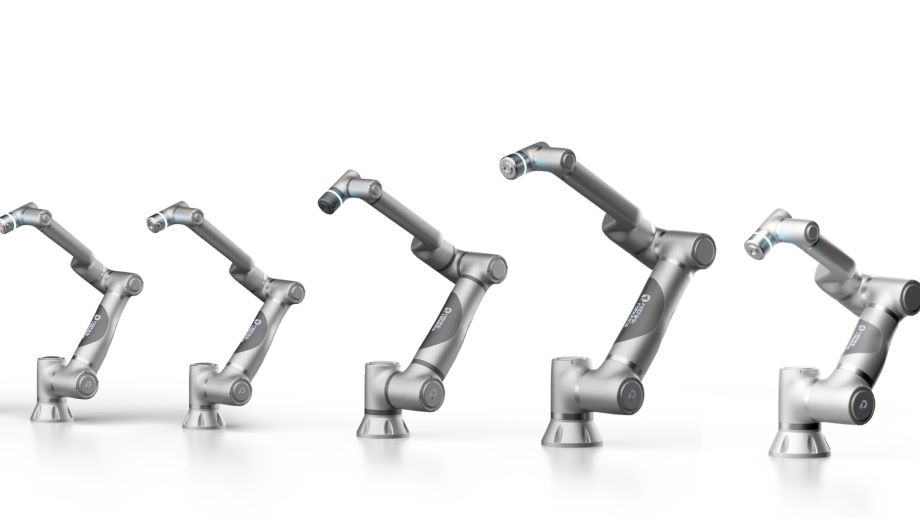World’s Fastest Quadcopter Rips Through the Sky
World’s Fastest Quadcopter Rips Through the Sky


Making the fastest quadcopter drone on the planet took years of work to fine tune every component.
Weeks after earning the Guinness World Record for the world’s fastest quadcopter, Ryan Lademann said, “I’m pretty much a hardcore nerd.” It’s just that quality—what others might call a well-informed focus and obsession—that kept him designing, experimenting, reworking, and reworking, and reworking, until he had a drone ready for the record books.
Lademann is currently a mechanical engineer for AJM Packaging. “It couldn’t really be anything more boring: paper bags and paper plates,” he said. “But the machinery is honestly the most fascinating equipment that I’ve ever seen.”
But back in 2014, he was a manufacturing engineer for Mac Valves, and not particularly thrilled with what he was doing. “Nothing was really satisfying my engineering needs. I was just bored to death,” he said. “Then I got my kids these drones.”
Also for You: Drone Racing is Built for Speed
They were small quadcopters that cost about $50 apiece. But Lademann was intrigued not because of what they could do, but because of what they didn’t do very well. “I remember seeing them and I’m just like, ‘Boy, they could not be designed worse than this,’” he said. “I mean, putting a flat plate directly underneath the propeller is just nonsense to me.”
So, he started tinkering and never stopped. Before long, he had a drone that could fly over 100 miles an hour. It was then that he decided to search online and see what top quadcopter speeds other people had achieved.
He found one hobbyist, Roboforcerx2000, who claimed to have hit 190 mph. In an online forum, the user challenged his fellow drone builders to go faster. “I have a different approach to things, when it comes to designing,” said Lademann. “When I saw this message board, I said to myself, ‘I don’t even want to see this guy’s design—I don’t want to see anybody else’s designs.’”
Instead, he started researching, reading papers, and digesting as much about aerodynamics as he could. Soon he had a drone that was flying at around 150 mph. Then, in summer 2017, the Drone Racing League set a Guinness World Record at 163.5. “I beat that with the next frame that I came out with,” Lademann said. “From there I thought, well, maybe I should go for the record.”
That determination led to a quadcopter that surpassed 170 mph. But Guinness measures an average speed of two flights in opposite directions (to negate any advantage wind might provide). So, to make sure he would have the record safely in the bag, he teamed up with Jim Frantz, an electrician, engineer, and former pilot, and his brother Forrest, a retired Boeing associate technical fellow. They helped with the aerodynamics and helped him create a quadcopter more than ready for an attempt at the record.
Become A Member: How to Join ASME
In 2018, Lademann did the paperwork, gathered the witnesses, and set out to make an official crack at the record. “I didn’t realize how long it really takes to get each frame ready,” he said. The attempt didn’t happen. The next day, though, he managed to hit 195 miles per hour. But before he could apply for another go with Guinness, COVID-19 hit.
The secret to Lademann’s wild leap in speed, compared to any other quadcopter on the planet, is not found in any one part of the design. “It’s just everything,” he said. “I optimized every single aspect you can possibly think of. And I’m not joking when I say there’s no room for a half a millimeter of moving a component.”
Years earlier, before the drones, his obsession was rockets. Lademann had a spreadsheet with an equation that allowed him to tweak numerous variables. So, he made a similar spreadsheet for his new mania. “I can tinker around with all different types of aspects of the frame, the motor, the propellors, and the battery, and see how each one was going to affect the speed.”
Realizing that the speed of the propellors were at its max—already in the transonic region—also gave him an edge over his competitors. He knew that trying to pump more power into the system with a larger battery was useless, so he saved on weight. In fact, the Drone Racing League, using a 10-cell battery compared to Lademann’s six, had several designs go up in flames.
Similar Reading: Drone Shifts Shape in the Air
Lademann also profited from a previous life as a medical student. Thanks to that training, he had an appreciation for designs created by evolution. “Organic structure has a big influence on my method of design since nature is very efficient,” he said.
Finally, at the end of 2022, with his XLR V3 frame ready and Guinness witnesses on site, Lademann flew his quadcopter for the win. The average speed was 224 mph, more than a third faster than the previous record. His peak speed was more than 235 mph. Lademann added that he’s managed to hit an unofficial 257 when witnesses weren’t around.
But there’s no chance of him hanging up his drones and resting on his laurels after such a triumph. “I can’t get enough time in the day to work on it,” he said. “Believe it or not, I’m actually refining this design right now.”
Michael Abrams is a technology writer based in Westfield, N.J.
Lademann is currently a mechanical engineer for AJM Packaging. “It couldn’t really be anything more boring: paper bags and paper plates,” he said. “But the machinery is honestly the most fascinating equipment that I’ve ever seen.”
But back in 2014, he was a manufacturing engineer for Mac Valves, and not particularly thrilled with what he was doing. “Nothing was really satisfying my engineering needs. I was just bored to death,” he said. “Then I got my kids these drones.”
Also for You: Drone Racing is Built for Speed
They were small quadcopters that cost about $50 apiece. But Lademann was intrigued not because of what they could do, but because of what they didn’t do very well. “I remember seeing them and I’m just like, ‘Boy, they could not be designed worse than this,’” he said. “I mean, putting a flat plate directly underneath the propeller is just nonsense to me.”
So, he started tinkering and never stopped. Before long, he had a drone that could fly over 100 miles an hour. It was then that he decided to search online and see what top quadcopter speeds other people had achieved.
He found one hobbyist, Roboforcerx2000, who claimed to have hit 190 mph. In an online forum, the user challenged his fellow drone builders to go faster. “I have a different approach to things, when it comes to designing,” said Lademann. “When I saw this message board, I said to myself, ‘I don’t even want to see this guy’s design—I don’t want to see anybody else’s designs.’”
Instead, he started researching, reading papers, and digesting as much about aerodynamics as he could. Soon he had a drone that was flying at around 150 mph. Then, in summer 2017, the Drone Racing League set a Guinness World Record at 163.5. “I beat that with the next frame that I came out with,” Lademann said. “From there I thought, well, maybe I should go for the record.”
That determination led to a quadcopter that surpassed 170 mph. But Guinness measures an average speed of two flights in opposite directions (to negate any advantage wind might provide). So, to make sure he would have the record safely in the bag, he teamed up with Jim Frantz, an electrician, engineer, and former pilot, and his brother Forrest, a retired Boeing associate technical fellow. They helped with the aerodynamics and helped him create a quadcopter more than ready for an attempt at the record.
Become A Member: How to Join ASME
In 2018, Lademann did the paperwork, gathered the witnesses, and set out to make an official crack at the record. “I didn’t realize how long it really takes to get each frame ready,” he said. The attempt didn’t happen. The next day, though, he managed to hit 195 miles per hour. But before he could apply for another go with Guinness, COVID-19 hit.
The secret to Lademann’s wild leap in speed, compared to any other quadcopter on the planet, is not found in any one part of the design. “It’s just everything,” he said. “I optimized every single aspect you can possibly think of. And I’m not joking when I say there’s no room for a half a millimeter of moving a component.”
Years earlier, before the drones, his obsession was rockets. Lademann had a spreadsheet with an equation that allowed him to tweak numerous variables. So, he made a similar spreadsheet for his new mania. “I can tinker around with all different types of aspects of the frame, the motor, the propellors, and the battery, and see how each one was going to affect the speed.”
Realizing that the speed of the propellors were at its max—already in the transonic region—also gave him an edge over his competitors. He knew that trying to pump more power into the system with a larger battery was useless, so he saved on weight. In fact, the Drone Racing League, using a 10-cell battery compared to Lademann’s six, had several designs go up in flames.
Similar Reading: Drone Shifts Shape in the Air
Lademann also profited from a previous life as a medical student. Thanks to that training, he had an appreciation for designs created by evolution. “Organic structure has a big influence on my method of design since nature is very efficient,” he said.
Finally, at the end of 2022, with his XLR V3 frame ready and Guinness witnesses on site, Lademann flew his quadcopter for the win. The average speed was 224 mph, more than a third faster than the previous record. His peak speed was more than 235 mph. Lademann added that he’s managed to hit an unofficial 257 when witnesses weren’t around.
But there’s no chance of him hanging up his drones and resting on his laurels after such a triumph. “I can’t get enough time in the day to work on it,” he said. “Believe it or not, I’m actually refining this design right now.”
Michael Abrams is a technology writer based in Westfield, N.J.




